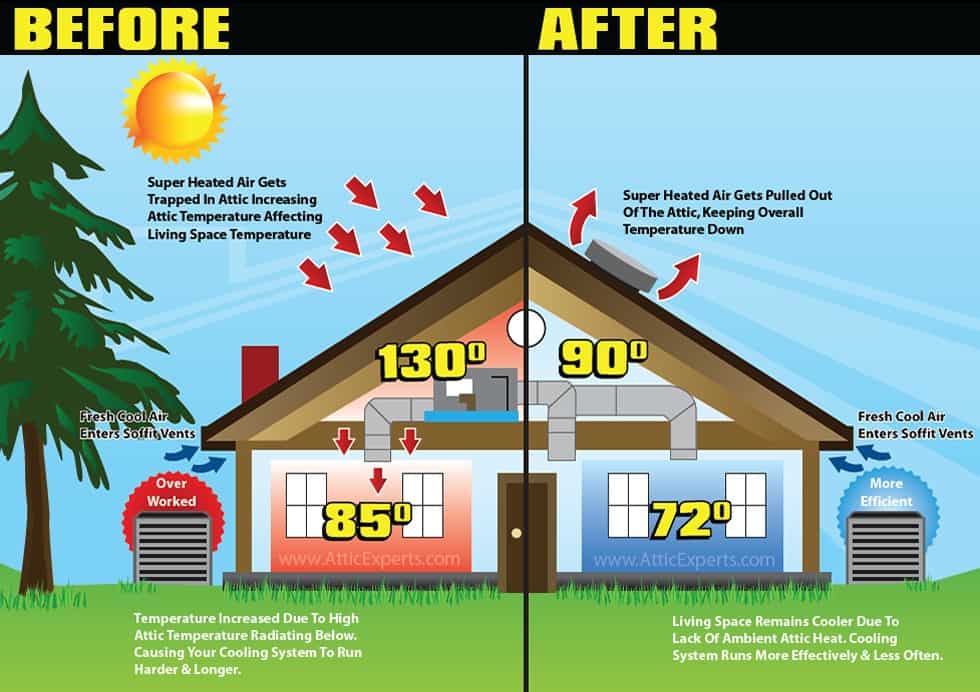Deciphering Insulation Climate Zones: How Attic Insulation Works?
![]() If I told you that your brand-new HVAC, sealed ducts, and double-paned windows were worthless, how would you feel? Probably a little defensive. After all, how could that be true? We’ve talked again and again about the value of each of those things in this very blog. How could they be really worthless?
If I told you that your brand-new HVAC, sealed ducts, and double-paned windows were worthless, how would you feel? Probably a little defensive. After all, how could that be true? We’ve talked again and again about the value of each of those things in this very blog. How could they be really worthless?
Well, maybe worthless isn’t the right word. Then again, if you had a million-dollar race car with a flat tire, how much good is it when you need a getaway car? Not much at all. Many HVAC systems are in the same situation: solid walls and windows, a great unit, and ducts that are tight and well-routed. But there’s one thing they’re missing: attic insulation.
How Attic Insulation Works to Regulate Your Home’s Temperature
While we tell people to insulate their attics (and rebate the work) all the time, we’ve never actually explained the science behind why this is an important upgrade. We also realized that people learn better when they can visualize something instead of just being told. So here’s something to visualize:
Heat moves vertically — more specifically, it rises. Hot air balloons work because the balloon is filled with rising hot air, lifting the entire contraption high above the trees. And cold air moves vertically, too, but it sinks instead of rising. This is why attic insulation is so important in any home: heat transfers vertically much more easily than it does horizontally.

Attic insulation works to keep your house cool in the summer and warm in the winter. | Image Source: atticexperts.com
Your walls can be very well insulated, and that’s helpful, but that’s not actually the direction the heat is traveling. If your attic isn’t insulated, you can say so long to the cool air in the summer and a warm house in winter. That isn’t to say that other insulation isn’t important, but the cheapest and most effective place to insulate is the attic. This is especially true in a climate like ours, where both the heater and the AC will be used regularly in any given calendar year.
Understanding Insulation for the Sacramento Region
The government’s EnergyStar website has a great diagram of how much insulation to use in your region — you can see that we in Sacramento are in Zone 3, which means you should be looking for a particular R-value in your insulation. We’ve discussed R-values in the past: this measurement describes how difficult it is for heat to move through a substance.
The higher the value, the more insulating a substance is. In building applications, the R-value is often tied to insulation thickness. If we take EnergyStar’s recommendation of a 3o – 60 R-value and consult our own website, we’ll see that fiberglass insulation would have to be installed at least 14 inches deep to achieve the required R-value.
Over a foot of insulation in each attic may seem like a lot, but we find that most homeowners we serve don’t currently have the right amount of insulation in their attics — I’d guess that fewer than half of our clients have adequate insulation for our climate. Think about your own attic: Is it filled with boxes and used furniture, a pipe-cleaner Christmas tree, boxes of photos, and Grandma’s old recipe book leaning up against a bookcase your great-great-great-grandfather made in the 1880s? People don’t like to hear this, but attics aren’t actually meant for storage. None of that stuff insulates nearly as well as 14 inches of fiberglass (and there probably wouldn’t be room for any of it if the home had the proper amount of insulation in the first place).
Getting Your Attic Inspected for Insulation Needs
Don’t feel bad if you haven’t thought about attic insulation in your home, but don’t just accept it either! Attic insulation can be one of the cheapest upgrades to your home for energy efficiency, especially when compared to the benefits it brings. (And did I mention rebates?) It’s easy and relatively cheap to install, has a quick turnaround, is rebateable, and will have a big effect on your home’s temperature retention. Most people need attic insulation improvement, so call Bell Brothers today to see if you’re one of them. You’ll get great service at a great price, and like always, no surprises.

